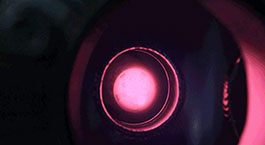 Your current location: Home > Technical Support > Popular Science Column > Fermion's 100 Q...
Your current location: Home > Technical Support > Popular Science Column > Fermion's 100 Q... The pressure of the gas in the vacuum system can be measured directly or indirectly by a vacuum gauge, that is, directly measuring the force per unit area, or using the relationship between gas pressure and some quantities to derive the pressure and indirectly obtain the air pressure value.

According to the technical principle, it can be further divided into:

2. Which experiments have extremely high requirements for extreme vacuum?
Generally, all surface analysis experiments have high requirements for vacuum, because the surface properties of materials can easily change with adsorption or contamination. Surface analysis experiments include but are not limited to XPS, ARPES, STM, REELS, LEED, MBE, PLD, etc.
In addition, experiments related to electrons have higher requirements for vacuum than other particles, because the mass of electrons is very small and it is easy to be absorbed or scattered during collisions. Therefore, in order to ensure that electrons are as undisturbed as possible, the vacuum degree is generally required to be at least E-6 mbar.
In addition to the above two types of experiments, cold atoms and molecular dynamics experiments also have high requirements for vacuum, because these experiments often study atomic clusters composed of hundreds of atoms, which are very easily disturbed by external factors, so they generally require a very high local vacuum. For cold atoms, the local vacuum may reach the order of E-12 mbar.
3. What is the highest vacuum limit that universities or research institutions can achieve at present
There is no special attention to the highest vacuum limit that universities or research institutions in the world can achieve at present, but there are indeed vacuum gauges specifically for XHV (Extreme High Vacuum) among commercial vacuum gauges. The following is a product of ULVAC, which can measure vacuum up to E-13 mbar.

At present, everyone is working towards a lower limit for vacuum measurement, but in fact the ultimate limit of vacuum is often extremely low temperature. For example, at the ambient temperature of mk, there are actually no gaseous elements. It is just a question of how to measure the vacuum value at this temperature. If you are interested, you can continue to read relevant literature, such as: Redhead P A. Extreme high vacuum[R]. Cern, 1999.


